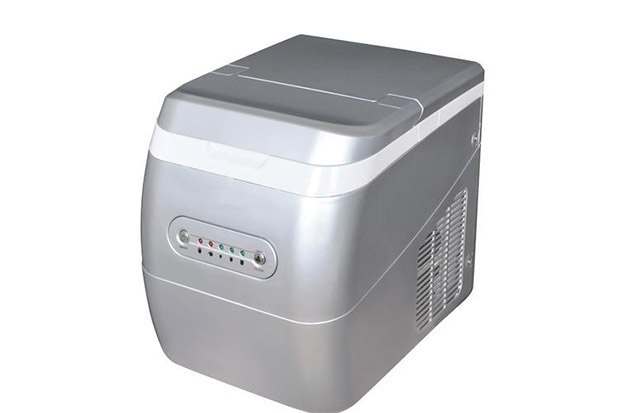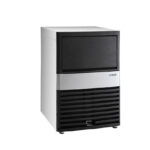How does an ice maker work? When they function as intended, automatic ice makers are useful and time-saving. However, they occasionally malfunction, just like all other machines. Understanding how an ice maker functions is necessary before you can figure out what’s wrong with your machine. Learn how an ice maker functions and some of the causes of your ice maker’s malfunction by reading on.
History Of Ice Maker
The first icemaker was created in 1850, claims eHow, by Dr. In 1866, Thaddeus Lowe and John Gorrie each produced the first ice maker that was available for purchase. However, neither of these devices allows owners to make ice at home.
It wasn’t possible to make ice at home without using an ice tray until 1953, when Servel started selling refrigerators with built-in ice makers.
It wasn’t until 1965 that Frigidaire introduced the first in-door refrigerator with an ice dispenser to the market. Up until the introduction of French door refrigerators, built-in ice makers stayed largely unchanged after that.
These refrigerators require a miniature freezer to be installed inside the refrigerator compartment because they move the freezer to the bottom. Typically, you’ll find these fastened to the inside of the door that houses the ice maker or the side of the refrigerator.
Types Of Ice Makers
The two main categories of ice makers are commercial and residential, despite the fact that there are numerous models available. Before purchasing any of these, you should think about their particular features and disadvantages.
Commercial Ice Makers
These ice makers are commercial-grade models, as suggested by their name. The commercial ice maker is present in almost all food service establishments. As befits a machine for commercial use, this apparatus is strong and designed to produce ice in greater quantities and of higher quality overall.
Modular – A separate unit that can store and dispense the ice is compatible with this commercial option, which makes a lot of ice. Additionally, they come in a variety of sizes, with widths ranging from 22 to 48 inches. These devices are designed to be placed on an ice bin or a soda dispenser.
Between 2,250 pounds per day and 1,000 pounds per day, the modular ice maker can produce ice.
Undercounter – The following ice maker is a hybrid of various devices. These can be installed under a high counter and, as their name suggests, include a storage bin. Even if they are small, it will meet the requirements for a bar, café, and restaurant.
The output also varies; some can provide you with up to 350 pounds daily, while others can provide you with more.
Countertop – Countertop ice makers are another variety. It is intended to be placed on a countertop, as the name suggests. This kind of ice maker is adaptable and is frequently used in both residential and commercial settings. It frequently provides nugget-style ice, which is easier to chew and makes it a great fit for healthcare settings.
Although some models have been found to provide up to 400 pounds of ice per day, the output here is not as impressive as that of some of the other types of ice makers.
Combination – The combination model is the last kind of ice maker that we’ll talk about in this section. As its name suggests, it is a flexible choice that is capable of more than just dispensing ice. These models also function as water dispensers. As a result, they are useful in offices, cafeterias, and hospitals. Additionally, you will find their ice to be simple to chew because they produce nugget ice.
The output is respectable, with combination ice makers producing up to 500 pounds of ice per day. The fact that these devices are portable and won’t take up much space wherever you decide to install them is another benefit.
Residential Ice Makers
These ice makers are the ones that are most suitable for homes. They frequently are compact, simple to set up, and simple to use because of where they are used. In this section, we look at some of the more well-liked residential ice maker models available today.
Countertop
The countertop model is the first style of ice maker we offer for homes. Portable ice makers are another name for them. For a number of reasons, they are great machines. For starters, they are small, don’t require a permanent water line to be installed, and can be plugged into a standard 110V outlet.
They are ideal for residential use because they quickly and quickly produce ice, and they sit on the counter. They cannot, however, also function as freezers, so any ice they do store will defrost fairly quickly. However, when it is turned on, the melted water is recycled to make more ice for you.
But their portability is their main benefit. These can be utilized for gatherings, outings, in the kitchen, at the pool, and other locations where portability and compactness are advantages over the amount of ice produced.
One of the top compact ice makers, according to reviews, is the Frigidaire EFIC189.
Built-in Under-counter
The under-counter machines are the next type in this classification. These built-in ice makers are intended to tuck under or between pieces of kitchen furniture. The catch is that these are some of the more difficult installation options. They should only be installed by a qualified plumber, barring extensive experience on your part. A permanent water line must also be installed in addition to the work needed to install it between your carpentry. Additionally, some models will even require a drain line, which would be a ton of work for someone without plumbing experience.
Even though they are more expensive than portable models, these are great at providing you with a constant supply of ice for a longer period of time.
Ice Maker In A Refrigerator
The refrigerator-mounted ice maker is the last type of ice maker, which is fairly typical in homes. Since they are already included with your refrigerator, there is no need for any installation. However, when compared to the ice production from the specialized ice makers available on the market, their ice production is quite low.
This kind of ice maker can be found in the fantastic Frigidaire FFSS2615TS. Users rank it as one of the best refrigerators.

How Do Ice Makers Operate?
Ice had to be manually made by pouring water into a mold and setting it in the freezer before automatic ice makers were invented. That same procedure is used to create ice by the ice maker in your freezer, but it has been automated.
The ice maker cycle ought to start automatically as soon as the ice maker is connected to a power and water source (i.e., the plumbing line attached to the back of your refrigerator). An electrical signal is transmitted to a water valve at the start of the cycle to fill the ice mold with water. After that, the freezer begins to freeze the water. When an internal thermostat detects that the cubes have reached 5 to 9 degrees Fahrenheit, a signal is sent to stop that process.
In order to remove the cubes from the molds after they have been made, a heating coil is turned on. Then, they are funneled into the collection tray using the ejector blades of the ice maker to push them out of the molds. The front dispenser of the device, which opens when the lever or button (depending on the model) is depressed, is separated from the tray by a shaft. This cycle will go on until the shut-off arm at the front of the ice maker signals that there are enough ice cubes to fill it to capacity.
A failed ice maker can be brought on by any number of malfunctioning mechanisms because this is a very complicated process with many interdependent steps.
Why Doesn’t My Ice Maker Work?
When an ice maker isn’t functioning properly, there are several common causes, some of which are easier to fix than others. It’s possible that the ice maker shut-off arm is broken or was unintentionally turned off. The water valve won’t be released if the temperature isn’t in the right range, so a malfunctioning ice maker thermostat may also stop the production of ice. The ice maker motor, which starts the cycle, might be the source of a more complicated problem.
The following are typical causes of an ice maker not working:
- Insufficient water pressure from your home plumbing line
- Overall freezer temperature is running too high to make ice
- Water filter needs to be replaced
- Frozen or clogged fill tubes (so water can’t flow into the ice trays)
- Faulty ice maker thermostat
- Faulty or clogged water valve
- Faulty ice maker motor (so ice maker cycle can’t advance)
Conclusion
What is the process of an ice maker? This post, in our opinion, has answered that query. With this information, it will be simpler for you to select the best ice maker for your needs and to perform minor repairs when necessary.


